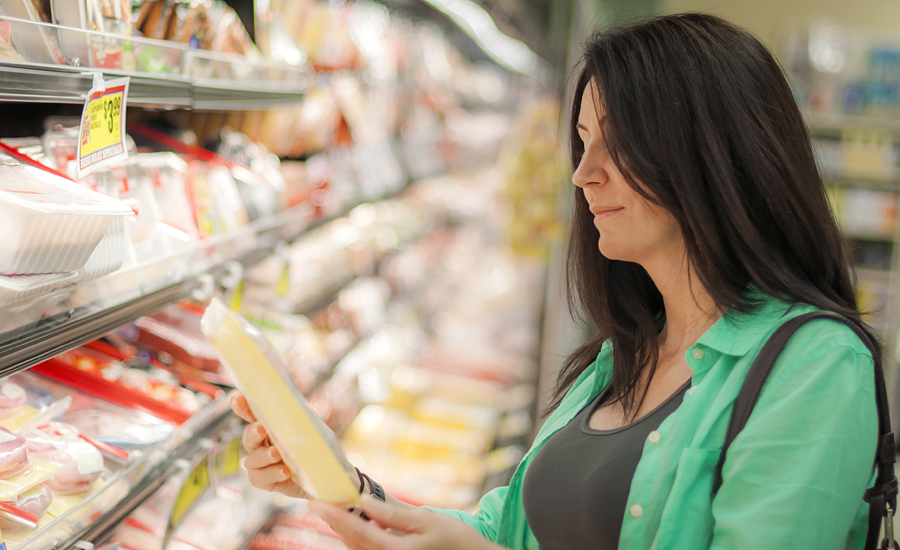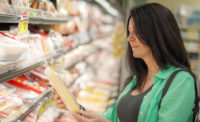The grocery landscape is changing. Amazon opened physical supermarkets, Walmart invested in e-commerce and many regional players now offer curbside pickup or delivery. What were once considered futuristic technologies like drones, robots and artificial intelligence are now merging with grocery retail to expand and re-shape the shopper experience. In addition, shoppers are getting more comfortable with online shopping and expect more from all of their digital experiences.
So, where should retailers focus their efforts? What do shoppers expect when it comes to digital grocery? What would entice them to try grocery shopping online, or better yet, to switch supermarkets? Most importantly, how fast do we need to move?
In order to provide timely answers to these questions, Unata, Canada, surveyed over 500 shoppers in December 2016 from across the United States, qualifying the adoption of online grocery shopping in 2016 and the appetite for e-grocery in 2017.
The findings indicate that e-grocery has moved from a differentiator to a critical method of doing business. Not only are more shoppers turning to digital for their grocery shopping needs, but once they try it, they are extremely likely to keep using it. They also expect a lot more from the online shopping experience and will flock to retailers that do it best.
1 out of 3 consumers will order groceries online in 2017
The number of U.S. shoppers who bought groceries online in 2016 more than doubled to 19%, up from 8% in 2015.This exceeds Unata’s 2016 e-grocery forecast prediction, where 17% of respondents said they were “very likely” or “somewhat likely” to buy groceries online in 2016, qualifying Unata’s annual e-grocery forecast an accurate predictor for the year ahead, and showcasing an accelerating pace of adoption.
e-grocery adoption will continue to accelerate to one-third of shoppers in 2017. In fact, the number of U.S. shoppers who buy groceries online will grow by more than 60% this coming year, with 31% saying they are “very likely” or “somewhat likely” to buy groceries online in 2017.
Shoppers across every age, gender and income bracket are similarly likely to shop for groceries online next year.
And, retention is through the roof, meaning once shoppers try it, they keep doing it. That’s because more than 80% of shoppers tried e-grocery in 2016.
e-grocery will determine if you grow—or shrink
Twenty-three percent of those who shopped online in 2016 said their current grocer does not offer e-commerce.
Looking ahead to 2017, of shoppers who said their current grocer does not offer e-commerce, 36% said they are likely to order online, meaning they will shop with another grocer.
More than two-thirds of online shoppers feel that the digital experience is core to where they shop. Sixty-eight percent of consumers that shopped online last year said they are somewhat / very likely to switch grocers for a better online shopping experience (quick, easy, convenient, enjoyable).
Meanwhile, 41% of those consumers who didn’t shop online last year said that they did not know if their grocers offered it.
To understand how to improve e-grocery retention, shoppers who only made a single online purchase were asked why they never made a second one. The study suggests retailers design their experience, so that the shopper is a single click away from the major features and sections that they are most likely to use, and make sure that they can get to products from the homepage with as few clicks as possible. Provide catalogue filters for item attributes such as local, gluten-free, organic and on sale.
How to win with e-grocery
Aside from a state-of-the-art e-grocery experience, there are five things shoppers value most from a digital grocery experience in 2017.
Easy-to-find products and deals. To understand how to improve e-grocery retention, Unata asked shoppers who only made a single online purchase why the never made a second one.
In 2016, 50% of all shoppers who never made a second online grocery order said it was because they couldn’t easily find the products they were looking for.
In 2016, 45% of all shoppers who never made a second online grocery order said it was because they couldn’t find as many deals online as in store.
Personalized offers, sales and product suggestions. One in three (31%) said they would switch grocers for personalized offers based on what they buy, while one in five (21%) said they would switch grocers for a personalized version of the weekly ad. One in five (20%) said they would switch grocers for personalized product suggestions based on preferences. Use 1-to-1 personalization to create relevance and inspire. Shoppers should feel that the experience has been tailored specifically for them. They should see their previous orders, have access to their most frequently purchased items and be shown products and specials that are relevant based on their shopping history. 1-to-1 personalization should extend to search results, the products displayed at the top of each department, product recommendations in the cart, the weekly ad and digital coupons.
Digital coupons. Shopper interactions and expectations are different online, therefore the weekly ad needs to reflect that. Rather than a PDF of your print version, design your weekly ad to capitalize on all that digital has to offer—personalization, omni-channel support, measurability and interactivity—and ensure it can support all of your most exciting content like complex offers, videos, recipes, collections and more. Connect it to your e-commerce, so that shoppers can easily take advantage of savings via an online order.
Thirty percent of shoppers said they would enjoy viewing the weekly ad online in 2017. Integrate digital coupons with e-commerce, so that coupons can be easily found and redeemed. Do this by connecting coupons to product pages and the catalogue, so that as coupons are clipped, the cart total adjusts in real time, allowing shoppers to more accurately budget their online shop and never miss another deal online.
In fact, 29% of shoppers said they would enjoy browsing and clipping digital coupons online in 2017.
“Fast” food. Meanwhile, 24% of shoppers said they are unlikely to shop online in 2017 because they don’t want to wait for their groceries, 25% of shoppers said they would switch grocers for 1-day delivery and 24% said they would switch grocers for same-day delivery.
Offer fast and affordable pickup and delivery options. Make the pickup and delivery part of the online shopping experience, giving options for both fulfilment type (curbside pickup vs same-day delivery vs next-day delivery) and pickup/delivery times. Explore external partnerships and “asset-light” delivery integration options to make delivery possible.
2017 is going to be a big year for digital grocery. An e-grocery solution is crucial for U.S. grocers to defend market share, with 36% of shoppers whose current grocer does not offer e-commerce planning to order online in 2017. Invest in an e-eommerce solution. Create a top-of-the-line user experience. Offer what your shoppers want, from personalization to fast delivery.


